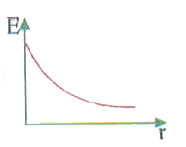Text Solution
Verified by Experts
|
Topper's Solved these Questions
ELECTROSTATICS
PRADEEP|Exercise SHORT ANSWER QUESTIONS|9 VideosView PlaylistELECTROSTATICS
PRADEEP|Exercise CURIOSITY QUESTIONS|4 VideosView PlaylistELECTROSTATICS
PRADEEP|Exercise TYPICAL EXAMPLES|1 VideosView PlaylistELECTRONIC DEVICES
PRADEEP|Exercise Fill in the Blanks|1 VideosView PlaylistMAGNETIC EFFECT OF CURRENT AND MAGNETISM
PRADEEP|Exercise Competition Focus (Multiple Choice Questions)|2 VideosView Playlist
Similar Questions
Explore conceptually related problems
Knowledge Check
A
B
C
D
Submit
A
B
C
D
Submit
A
B
C
D
Submit
Similar Questions
Explore conceptually related problems
PRADEEP-ELECTROSTATICS-CONCEPTUAL PROBLEMS
- A glass rod rubbed with slik is brought close to two uncharged met...
03:49
|
Play - (a) A comb run through one’s dry hair attracts small bits of paper. Wh...
07:00
|
Play - Plot a graph showing the variation of coulomb force (F) versus ((1)/(r...
06:12
|
Playing Now - In defining electric field due to a point charge, the test charge, th...
01:54
|
Play - Figure shows tracks of three charged particles crossing a uniform elec...
02:58
|
Play - Two small identical electric dipoles AB and CD, each of diople moment...
Text Solution
|
Play - Figures (a) and (b) show the field lines of a positive and negative po...
07:38
|
Play - Fig. shows two identical capacitors C(1) and C(2) each of 1 muF capac...
07:12
|
Play




